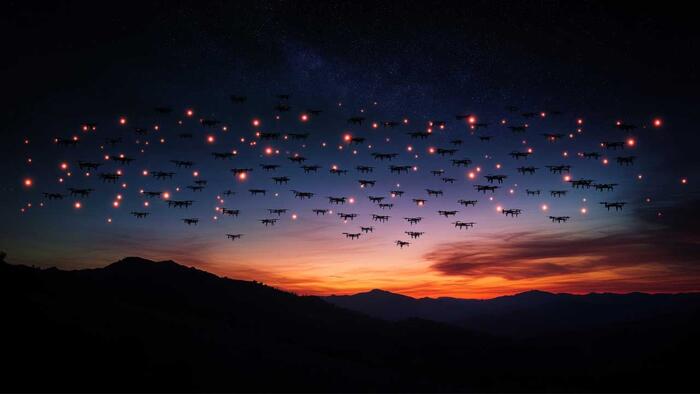In recent discussions about the surge of drone sightings across the United States, White House official John Kirby downplayed public concerns by asserting that these occurrences represent “legal” and “lawful” activities. During an interview on Fox News with Brett Baier, he indicated that a thorough analysis of over 5,000 sightings showed that the drones involved were primarily commercial, hobbyist, or law enforcement in nature. Kirby underscored the importance of federal regulations, noting that flying drones in non-restricted airspace is permissible as long as operators are registered with the FAA. This classification led Kirby to suggest that the public’s apprehension about the drone sightings may stem from a mass hysteria rather than a manifestation of irregular or unlawful activity.
Despite Kirby’s reassurances, the backdrop of notable incidents raises questions about the validity of his claims. Notably, major military installations like Wright-Patterson Air Force Base faced shutdowns due to unexplained drone activity, contradicting Kirby’s assertion of general legality. This dissonance is echoed by President-elect Trump, who suggested that the government knows more about these drones than it is publicly revealing, positing a sense of governmental secrecy regarding the entire situation. Such statements have stirred further skepticism among the public, with many Americans increasingly doubtful of official reassurances in light of the disruption caused by drone activity at critical military and airport locations.
The situation escalated last Friday when drones caused significant interruptions at New York’s Stewart Airfield, compelling Governor Kathy Hochul to express alarm and declare that the circumstances had become excessive. Air traffic control recordings from the airfield revealed controller concerns over “heavy UAS activity,” leading them to advise pilots to maintain heightened caution while flying. This response showcased the growing anxiety among aviation authorities regarding the unusual density and behavior of these drone sightings, fueling speculation about their origins and purposes.
Complications heightened when police officers in New Jersey reported seeing an alarming formation of 50 drones, some described as “the size of cars,” maneuvering in unusual patterns over the ocean. This observation piqued public interest and raised alarms about safety, as witnesses reported that some of these drones lacked a discernible heat signature. Additionally, there were strange side effects on observers and their equipment, including unexplained malfunctions of car clocks and radios, furthering the sense of unease surrounding these phenomena.
These incidents beg the question of whether these drones may be engaged in government or military operations, particularly considering their propensity to appear predominantly at night. The implications of such drone presence not only raise concerns about privacy and airspace security but also suggest the potential for undisclosed military projects. Kirby’s narrative that these drones are merely benign has come under scrutiny as the public remains vigilant against what they perceive as unusual activity that contradicts typical aviation behavior and regulations.
In conclusion, Kirby’s optimistic assessment of the drone sightings faces significant public skepticism, with many Americans finding it hard to square his reassurances with the severity of disruptions reported in military and civil aviation. With high-profile figures like Trump hinting at undisclosed knowledge within the government, and with multiple incidents of drone activity causing operational challenges, the call for transparency regarding these aerial incursions grows louder. Observers question the legitimacy of the official narrative as the mystery of the drones deepens, reflecting broader concerns about governmental accountability and the implications of surveillance technologies.

